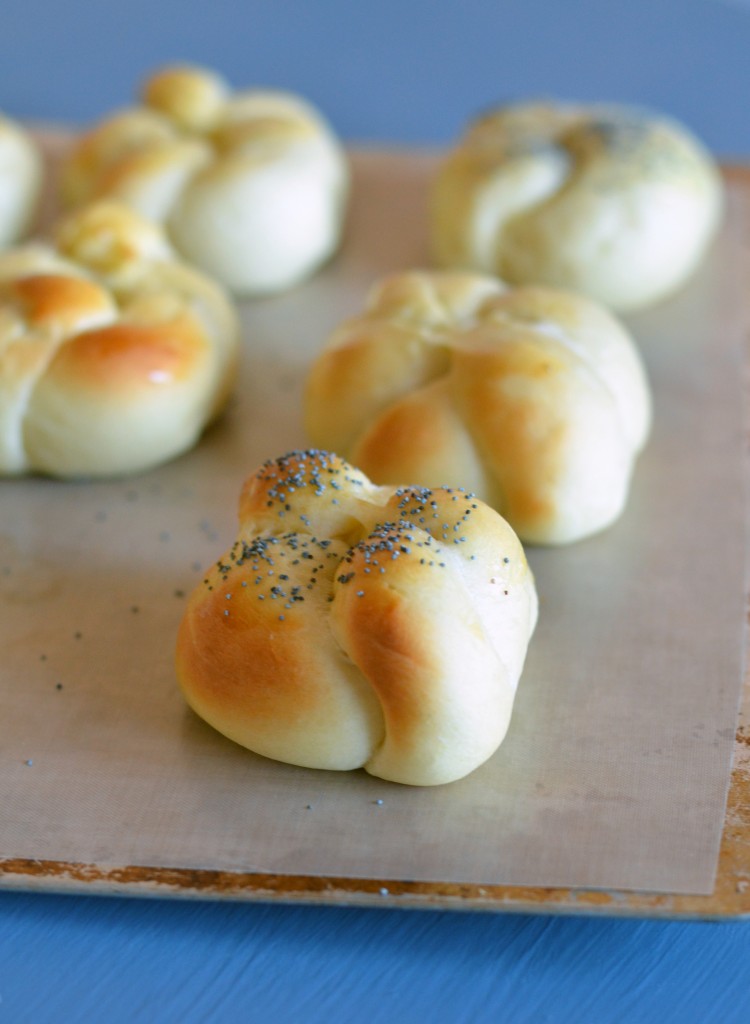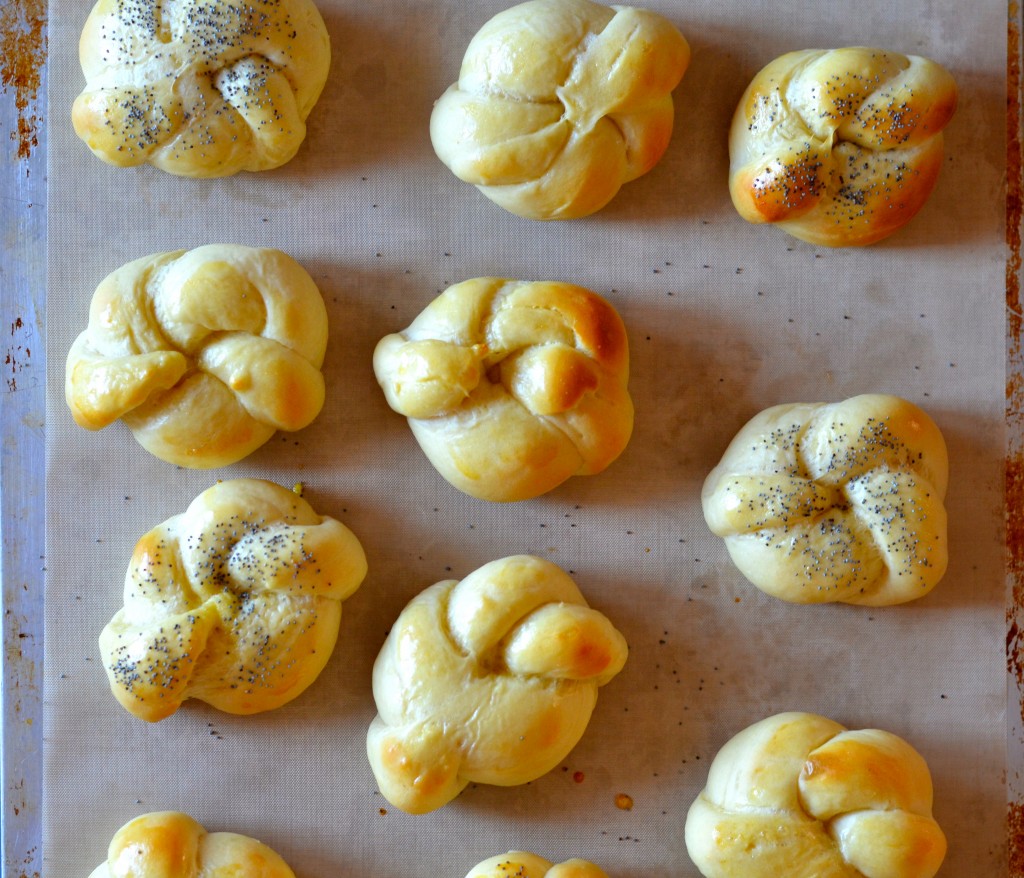I start teaching today, which means that twice a week, I’ll be eating dinner on campus. After three years of graduate school, I thought I was finished toting my dinner to class, but alas, I’ve broken out my lunchbox yet again. For the most part, I’m imagining quinoa salads, but occasionally, I’ll make a turkey sandwich and when I do, I’ll make one on these overnight refrigerator rolls (my absolute favorite roll recipe).
As I’ve mentioned before, my affection for rolls began young. My Grammy would make these soft and buttery dinner rolls that I loved more than any sweet treat that came out of her kitchen. To this day, I’d take a good chunk of bread over a piece of cake or a cookie. Add a pat of organic butter, and I’m drifting off towards my food heaven.
With a baby though, it’s been harder and harder to make homemade bread. That is until I remembered my favorite slow-rise bread recipe. Not only can I make these rolls the night before, while Lucy sleeps, but the overnight rest results in a much more flavorful end-product. So this recipe couldn’t be any tastier or any easier. You mix and knead the dough, plop it into a lightly oiled bowl, let it rest in your refrigerator overnight (or up to three days) and then remove it to shape and proof the next morning.
These overnight refrigerator rolls might take you back to your childhood. They’re soft, slightly sweet, and enriched with milk and butter. Imagine serving these with a bowl of chicken noodle soup or with a slow cooked pot roast. Or, like me, you can slice these rolls in half and load them up with turkey and veggies.
Wish me luck as I embark on my adventure. I’ll be sure to share how my classes are going next week!
Overnight Refrigerator Rolls
*From Peter Reinhart’s Artisan Bread Every Day
1 3/4 cup lukewarm milk (15 oz)
1 tablespoon instant yeast
6 1/4 cups unbleached bread flour (28 oz)
1 tablespoon kosher salt (or 2 teaspoons table salt)
5 1/2 tablespoons granulated sugar
6 tablespoons melted unsalted butter
1 egg
Egg wash (optional)
1 egg
1 tablespoon water
Poppy seeds
Whisk the yeast into the lukewarm milk and allow to sit for 5 minutes.
Meanwhile, combine the flour, salt, sugar, butter, and egg in a mixing bowl. Pour in milk mixture. Using the paddle attachment on your stand mixer (or a large spoon), mix for two minutes. Switch to the dough hook and mix on medium-low speed for 4 to 5 minutes (or knead by hand on a lightly floured counter). The dough should be soft and tacky but not sticky.
Form dough into a ball and place the dough in a lightly oiled bowl. Cover the bowl tightly with plastic wrap and allow to rest in refrigerator overnight (or up to 3 days).
Remove the dough from the refrigerator about 2 1/2 hours before baking. Shape dough into 2-ounce rolls and place on a parchment lined baking sheet. This recipe will make about 2 dozen rolls, give or take a few. Mist the dough with spray oil, cover with plastic wrap, and allow to rise at room temperature for 2 1/2 hours. About 15 minutes before baking, preheat oven to 350 degrees Fahrenheit. Before baking, you can brush the rolls with a basic egg wash (1 beaten egg with 2 tablespoons water). Sprinkle poppy seeds on top of rolls if desired.Bake rolls for 15 minutes, or until just lightly browned.







